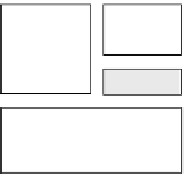Image Processing Reference
In-Depth Information
Client
Client
e.g., Web
browser
e.g., Web
browser
IP-based network
TCP/
UDP/IP
Field-
bus appli-
cation
TCP/IP
Fieldbus
APP
Mapper
Mapper
(routing)
Fieldbus
APP
Dispatcher
Fieldbus DLL/MAC
Fieldbus DLL/MAC
Fieldbus PHY
Fieldbus PHY
Fieldbus
Field device
Mapper
Field device
e.g., Web
server
FIGURE .
Protocol and software structure for IP tunneling over a fieldbus.
device and the fieldbus address used to actually communicate with the device over the fieldbus his
requires the implementation of an IP routing service on the access point. Additionally, a network
address translation including the mapping of services to dedicated ports might be necessary if the
IP address ranges on either side of the access point are not consistent, e.g., if private addresses are
used for the fieldbus and public ones for the outside network. he address translation problem can
be alleviated by extended addressing schemes allowing the use of IP-like addresses directly on the
fieldbus. For example, PROFIBUS supports such an extended addressing mode.
The second aspect of traffic handling is scheduling. IP packets tend to be much larger than field-
bus data frames, which were optimized for the timely transmission of small pieces of data. Sending
IP packets over a fieldbus therefore demands fragmentation and the introduction of fragment num-
bers to permit a correct reassembly. Contrary to statements frequently found in the literature [,],
there is no lower limit for the fragment size. he argument that the IP header must not be fragmented
(thereby introducing a minimum fragment size of bytes) is valid only if the native fragmentation
mechanisms “inside” IP are used. his is, however, not a stringent requirement for the implementa-
tion of a tunneling solution, and the IP packet can be treated like any arbitrary binary large object
and cut into pieces of arbitrary size. What is necessary, though, is to properly schedule the insertion
of the IP data stream in the usual fieldbus traffic to avoid possible distortion of the real-time char-
acteristics. These additional functionalities require a separate mapping and dispatching layer in all
devices participating in the IP communication channel, which could be placed on top of either the

































